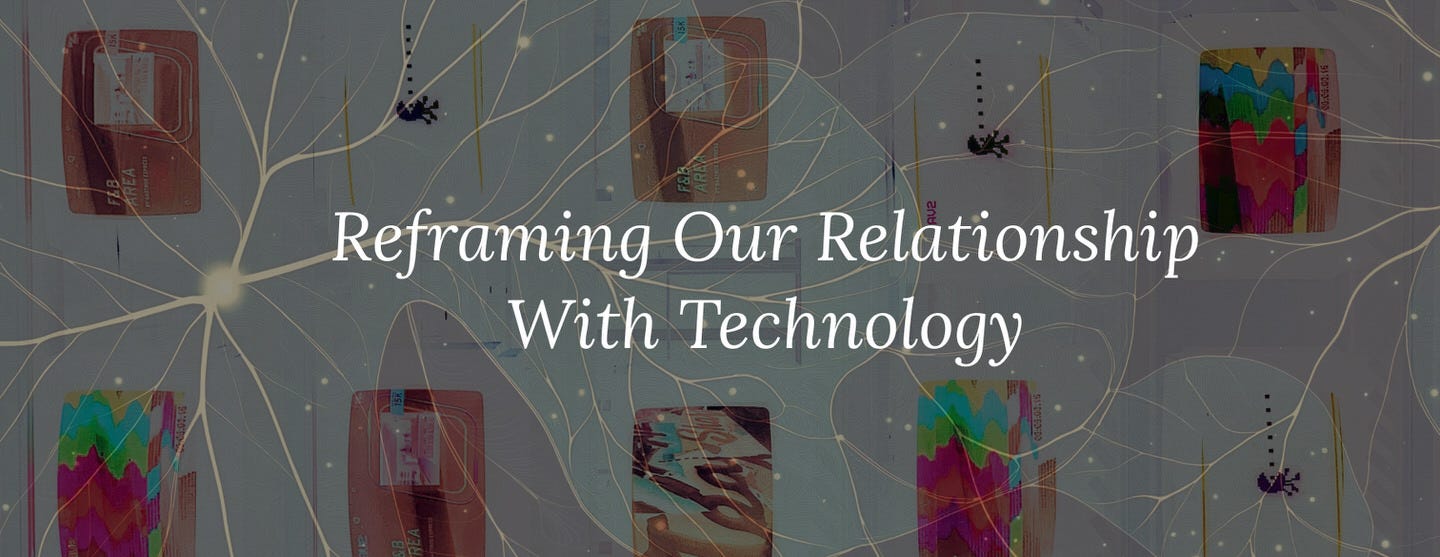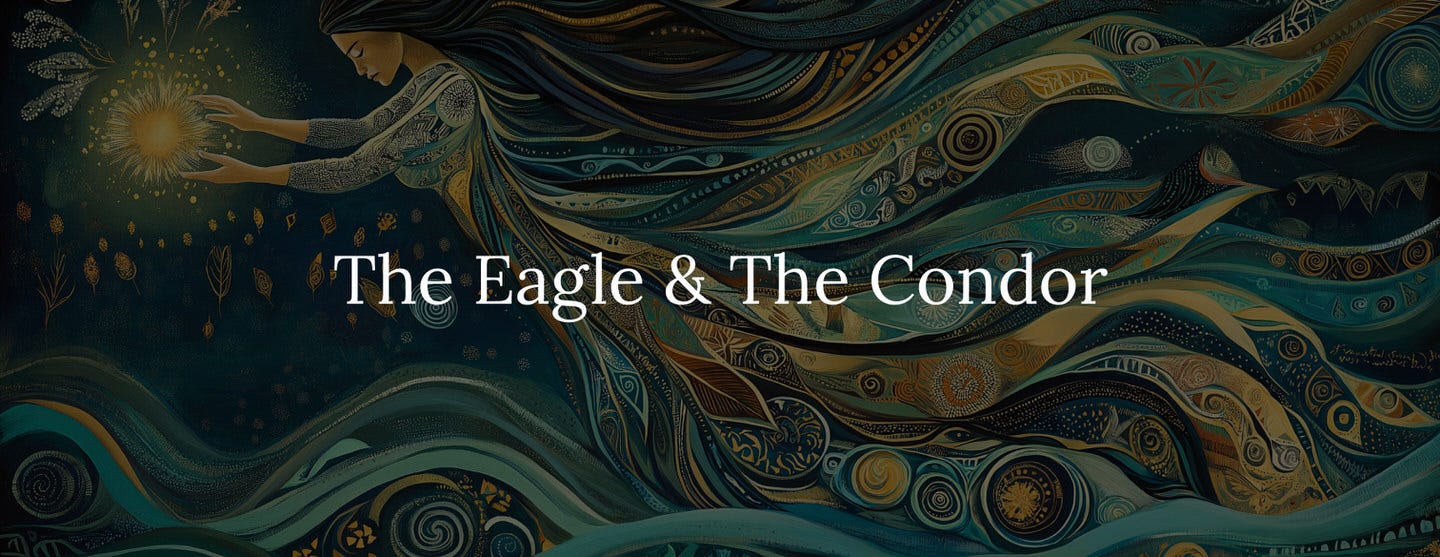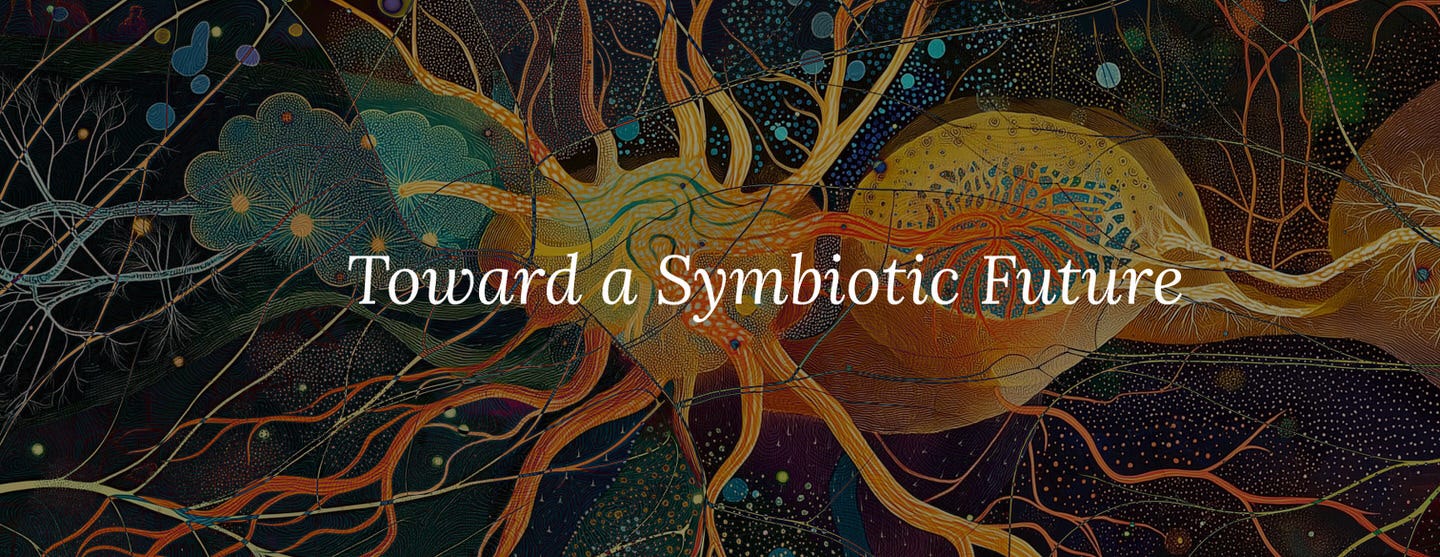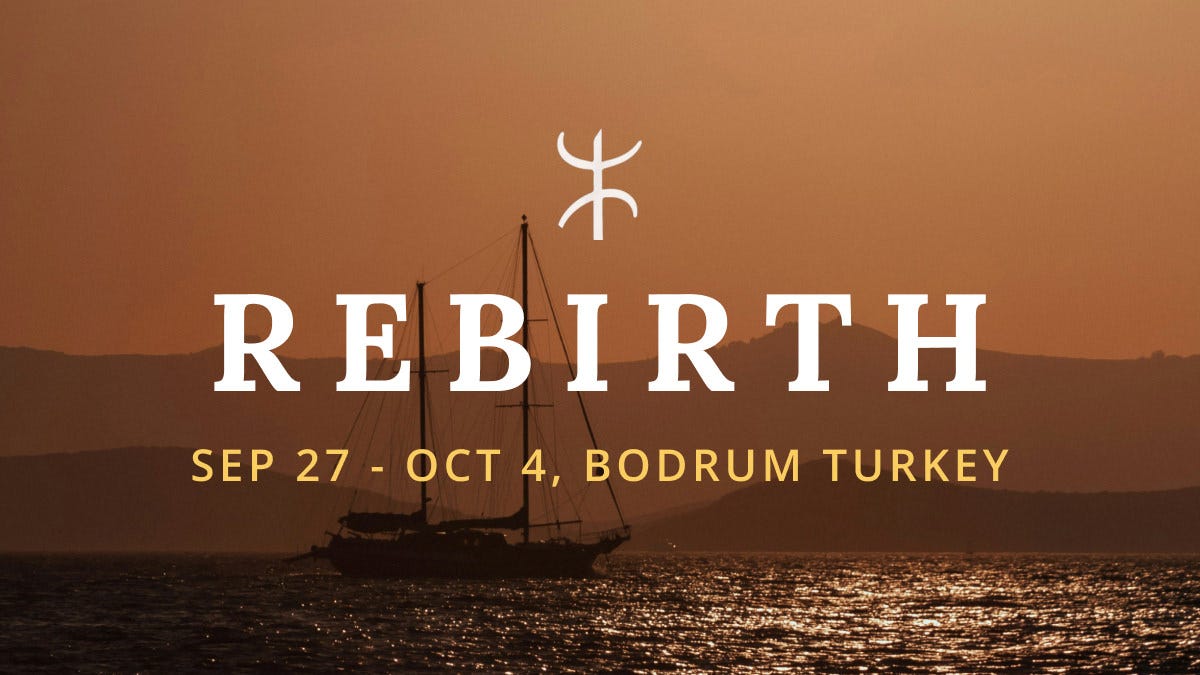The Sacred Renaissance: A Call For Action
How Indigenous Wisdom & Hyperhumanism Can Guide Us Toward a Regenerative Future
As decentralized technology and artificial intelligence continue to advance at breakneck speed, humanity finds itself at a crossroads. With new capabilities come complex ethical questions, particularly around how we harness technology to benefit human well-being without sacrificing the sacred, relational nature of life on Earth. Enter hyperhumanism—a concept championed by Carl Hayden Smith that encourages us to view technology as a tool to amplify, not replace, human experience. This perspective challenges us to rethink not only the function of technology but our fundamental relationship with ourselves, with nature, and each other.
Drawing on insights from indigenous wisdom, the kinship worldview, and Smith’s ideas on hyperhumanism, this article explores how crypto and AI might serve not as a conqueror of human tasks, but as a support in cultivating our unique human potential. This journey invites us to draw from the myths of both The Eagle (Western society’s rational, industrial mindset) and The Condor (indigenous, heart-centered ways) to enter an era of collaboration, stewardship, and respect for all life—a regenerative age where technology aligns with the rhythms of nature.
🪙 Sacred Economies for a Regenerative Future
Among the most transformative innovations of the 21st century, cryptocurrencies hold the potential to revolutionize money and value itself. At their core, cryptocurrencies enable the creation of new forms of money and value. Money is essentially an agreement of value between parties. Crypto allows us to program new values into the fabric of money through smart contracts. These contracts have the capacity to reflect and embed new human values, transforming financial transactions into sacred offerings to the intricate web of life.
Throughout history, humanity has expressed devotion to the sacred through acts of creation—building temples, sculpting divine figures, and composing sacred texts. Today, we are called to approach the redesign of money with similar reverence, crafting economic systems that honor humanity’s highest ideals. Cryptocurrencies, when designed with intention, can actually become vessels for ecological regeneration, social equity, and even spiritual awakening.
Imagine a world where every transaction contributes to reforestation, supports clean water initiatives, or funds community-led education. With the transparency of open blockchains, crypto can embed principles of reciprocity, ensuring that the flow of resources mirrors the regenerative cycles of nature. For example, the fees accrued from trading tokens could direct capital towards indigenous communities that restore ecosystems—putting capital towards the only people that have proven they can live in harmony with nature for millennia.
This sacred redesign of money invites technology leaders to step into almost a shamanic role. By becoming vessels for higher consciousness, technologists can channel values of interconnectedness and abundance into the systems they build. Cryptocurrencies, in this context, are not merely tools for economic growth; they have the potential to be catalysts for a collective awakening—a way to align human progress with the cycles and rhythms of the natural world.
When money becomes more than a medium of exchange—when it becomes a regenerative force of nature—we unlock the potential for a vast flywheel of prosperity that regenerates entire ecosystems and inspires spiritual renewal. Crypto offers humanity a profound opportunity to reimagine wealth not as accumulation but as circulation: a sacred flowing river that nourishes all life.
🦾 Reframing Our Relationship With Technology
In the words of Carl Hayden Smith, hyperhumanism reframes our relationship with technology. Instead of viewing AI as an “intelligent” competitor, hyperhumanism sees it as a partner—a mirror reflecting human creativity, potential, and limitations. It recognizes that while AI can process data, it lacks the depth of human experience and consciousness. Hyperhumanism proposes that technology can expand human understanding, but only if we remain rooted in our unique physical, sensory, and spiritual realities.
Smith's philosophy resonates with indigenous wisdom, where technology and tools were historically designed to support life and sustain communities. The kinship worldview—a perspective shared by many indigenous cultures—sees life as a sacred web of relationships that includes animals, plants, rivers, and mountains. From this perspective, technology should harmonize with, not dominate, the natural world.
🧠 Amplifying Humanity’s Sacred Potential
Artificial intelligence offers a parallel opportunity: the ability to amplify and deepen human creativity, connection, and stewardship. However, this requires a shift in how we conceptualize AI—not as a competitor or replacement for human intelligence but as a mirror and partner in the exploration of our potential. It can help us see our own shortcomings as a species and built complex, adaptive systems that funnel resources back to nature in the most efficient way possible using remote sensors, field measurements and satellite data—together forming a kind of ‘planetary sapience’.
Carl Hayden Smith’s Hyperhumanism emphasizes that AI should expand human understanding without diminishing the richness of our embodied, sensory, and spiritual experiences. While AI can process data and reveal patterns at an unprecedented scale, it lacks the lived experience, emotional depth, and relational awareness that define human life. Hyperhumanism reframes AI as an extension of our collective intelligence, capable of amplifying creativity and connection when guided by human values. When we as humans recognize ourselves as a nested ecology of relations, the systems we build from this state of consciousness can also start to reflect this deeper underlying story of human identity.
For example, AI could play a vital role in protecting endangered languages, preserving indigenous knowledge systems, and supporting ecological regeneration. Imagine AI systems designed to map biodiversity, optimize sustainable resource use, or facilitate cultural exchanges across borders. These technologies, when rooted in indigenous principles of kinship and reciprocity, can serve as tools for cultivating humanity’s sacred relationship with the Earth.
From indigenous wisdom, we learn that storytelling, ceremony, and engagement with the natural world are central to human flourishing. AI, aligned with these values, can enhance these practices rather than erode them. AI-driven tools might help communities codify and protect ancestral practices and knowledge systems, anchoring technological innovation in cultural and ecological contexts.
By aligning AI development with the sacred rhythms of nature, and doing so in an open, modular and auditable way, we can shift from designing extractive technologies to creating regenerative systems. In doing so, AI can become a partner in cultivating not only new states of consciousness but also enduring traits of empathy, creativity, and resilience—traits that affirm our place within the sacred web of life.
🦅 The Eagle & The Condor: A Prophecy for Balance
In indigenous prophecy, The Eagle and The Condor represent two archetypes: The Eagle symbolizes the Western, rational, and industrial mind—obsessed with tools, fire and reason, while The Condor embodies indigenous, spiritual, and heart-centered wisdom connected to relationships and the entire web of life. This prophecy foretells a time when The Eagle and The Condor would soar together, blending technological advancement with spiritual wisdom to bring balance to the world in a time of crisis. Many indigenous leaders suggest that this time is now—that humanity is being called to unify these two paths and restore balance to Earth’s ecosystems.
Hyperhumanism bridges these two archetypes by encouraging the creation of technology that not only serves the mind’s analytical prowess but also uplifts the heart’s intuitive wisdom. By integrating indigenous values such as reciprocity and kinship, we can ensure that innovations like crypto and AI serve life rather than exploit it.
We need to see collaborative pop-up villages that bring together indigenous communities, technologists, and philanthropists toward a shared vision of a symbiotic future. By allowing technologists and philanthropists to experience firsthand unity in nature, the power of ceremony and the wisdom of elders, we could begin to see the new kind of sacred technological renaissance that our world so clearly needs. Instead of hosting climate, AI and crypto conferences in concrete jungles of our cityscapes, why not take them to the places in nature that are home to the very life systems our species depend upon to survive?
🌍 Toward a Symbiotic Future: Hyperhumanism As A Regenerative Pathway
In an age marked by both technological progress and ecological crisis, Hyperhumanism offers a pathway for integrating AI and decentralized technology in ways that enhance, rather than diminish, human and ecological well-being. Indigenous wisdom and the kinship worldview remind us that technology must serve life, not the other way around. The myth of The Eagle and The Condor inspires us to cultivate a balance between the mind and heart, reason and intuition, technology and spirit.
Together, these perspectives encourage us to view tools like cryptocurrencies as means of amplifying our innate human ability to create, to connect, and to care for the Earth rather than pursuing the endless accumulation of resources for personal profit. By embedding the principles of kinship, reciprocity, and the concept bioregions into the fabric of technological development, we have the opportunity to foster a future where humanity thrives in harmony with all of life.
The time has come for the Eagle and the Condor to soar together, embracing the power of decentralized technology not as a path to dominance but as a sacred means of rediscovering our place in the great web of life. As we embark on this journey, may we remember the wisdom of our ancestors and honor the natural world as a sacred partner in our shared future.
At the end of the day we must remember:
We are not regenerating nature.
We are nature regenerating itself.
P.S. — If you’re interested to explore the concept of a sacred renaissance further with a small group of other leaders working on planetary challenges, check out the REBIRTH New Earth Leadership Immersion that Carl Hayden Smith and I are hosting this September in Bodrum, Turkey!
Cover photo by Oliver Guhr on Unsplash with Midjourney magic
TV Photo by Dodi Achmad on Unsplash with Midjourney magic










